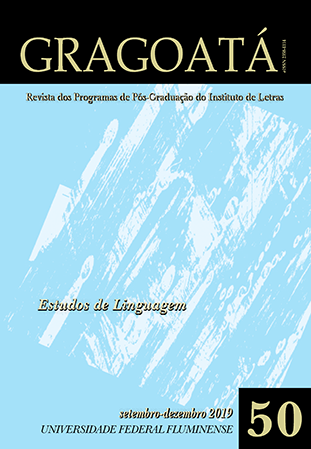Polysemy and interdiscursivity in Bruno Drummond’s cartoons: a linguistic-discoursive approach
DOI:
https://doi.org/10.22409/gragoata.v24i50.34179Keywords:
humor, language, discourse, polysemy, interdiscursivity.Abstract
The study presented here makes a linguistic-discursive approach to Bruno Drummond's cartoons. It establishes, initially, a distinction, in the field of graphic humor, between charge, cartoon and caricature. Next, it highlights the characteristics of the cartoon. For the corpus analysis, it employs the concepts of polisemy and interdiscursivity establishing the differences between the latter and the concept of intertextuality. In the theoretical basis of graphic humor, the considerations of Teixeira (2005) and the author under analysis (2007) are prioritized. As regards the interdiscursivity / intertextuality binomial, the studies of Jenny (1979), Dallenbach (1979) and Fiorin (2003) are highlighted. In the approach of polysemy, in comparison with homonymy and synonymy, the works of Borba(1970) and Gonzáles et al.(1989) are valued. Finally, the corpus analysis are supported by the considerations of Charaudeau (2005) regarding the concepts of sign of language and sign of discourse, as well as his observations on discursive inferences.
Downloads
Downloads
Published
How to Cite
Issue
Section
License
Authors who publish in Gragoatá agree to the following terms:
The authors retain the rights and give the journal the right to the first publication, simultaneously subject to a Creative Commons license CC-BY-NC 4.0, which allows sharing by third parties with due mention to the author and the first publication by Gragoatá.
Authors may enter into additional and separate contractual arrangements for the non-exclusive distribution of the published version of the work (for example, posting it in an institutional repository or publishing it in a book), with recognition of its initial publication in Gragoatá.

Gragoatá is licensed under a Creative Commons - Attribution-NonCommercial 4.0 International.











